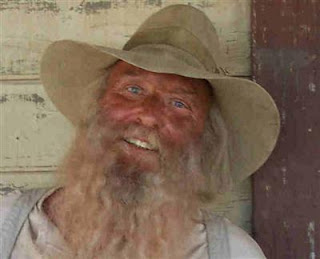 Okay, the planet's cooking a little. There's evidence anywhere you care to look: Arctic, Andes, Antarctica, Alaska, Australia, Atlanta (is it an incredible coincidence that they all begin with "A"?)... Burning hydrocarbons are the culprits. Everybody knows that. But what to do?
Okay, the planet's cooking a little. There's evidence anywhere you care to look: Arctic, Andes, Antarctica, Alaska, Australia, Atlanta (is it an incredible coincidence that they all begin with "A"?)... Burning hydrocarbons are the culprits. Everybody knows that. But what to do?First of all, forget the giant mirrors in space. Too difficult and expensive. And all those lofty notions of machines that suck CO2 out of the atmosphere? At best, they are many years away, with significant cost hurdles and engineering challenges still to be resolved. More likely, we’ll engage in some combination of cruder efforts, including painting every rooftop and roadway and parking lot in the world white to replace some of the Arctic ice’s lost capacity for solar reflectivity.How's that for a start. I have advocated for government programs to assist in the installation of a solar collector of some kind on the roof of every building under the governance of the United States, many or single. Turning that amount of surface area into glacier-like reflecting nodes is a major step in that direction. If you could do it with a paint-like, reflecting substance which also added a non-trivial insulating factor, it would be even more effective, I imagine.

I have not read the book, but I am ordering it today. It's all about a phenomenon we all recognize on a local scale, the climatological "snap"--cold snap, principally--only writ large all over the world. A global, and irreveersible "climate" snap:
A CLIMATE SNAP? REALLY? It sounds so much like standard fear-mongering and ecohyperbole. But here’s proof: One of the most prestigious scientific bodies in the world, the group that just shared the Nobel Peace Prize with Al Gore for its climate work, predicted fourteen months ago that unchecked global warming could erase all of the Arctic Ocean’s summertime ice as early as 2070. Then, just two months later, in April 2007, a separate scientific panel released data indicating that the 2070 mark was way off, suggesting that ice-free conditions could come to the Arctic as early as the summer of 2030. And as if this acceleration weren’t enough, yet another prediction emerged in December 2007. Following the year’s appalling melt season, in which vast stretches of Arctic ice the size of Florida vanished almost weekly at times, a credible new estimate from the U.S. Naval Postgraduate School in Monterey, California, indicated there could be zero—zero—summer ice in the Arctic as early as 2013.How, indeed. Not really a question, but a demand. Five years until Arctic Ice disappears in summer? Ever so much sooner than the oil companies had hoped, at least...
Five precious years. An eye-blink away.
So the Arctic doomsday prediction has gone from 2070 to 2013 in just eleven months of scientific reporting. This means far more than the likely extinction of polar bears from drowning and starvation. A world where the North Pole is just a watery dot in an unbroken expanse of dark ocean implies a planet that, well, is no longer planet Earth. It’s a world that is destined to be governed by radically different weather patterns. And it’s a world that’s arriving, basically, tomorrow, if the U.S. Naval Postgraduate School has it right.
How could this be happening to us? Why is this not dominating every minute of every presidential debate?









3 comments:
when i first moved to new mexico the ole spanish bros told me the sangre de christo mountains would stay sno capped all year.
The Truchas peaks--muy alto--and Taos Mountain did usta stay crowned in snow virtually all year. Snow melt from the peak kept the rivers wet all year, too...Nunca mas...
When I saw your image of your blog, it seems like people to me that don't want to be alone. Because no man is island :). Thank you for your great posting and keep up the good work.
Post a Comment